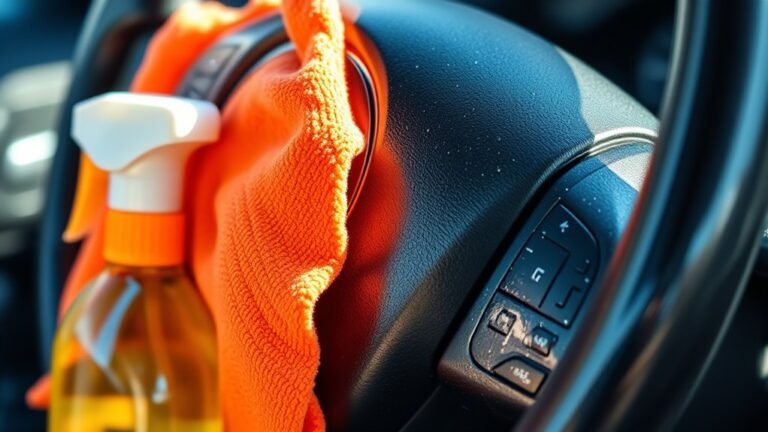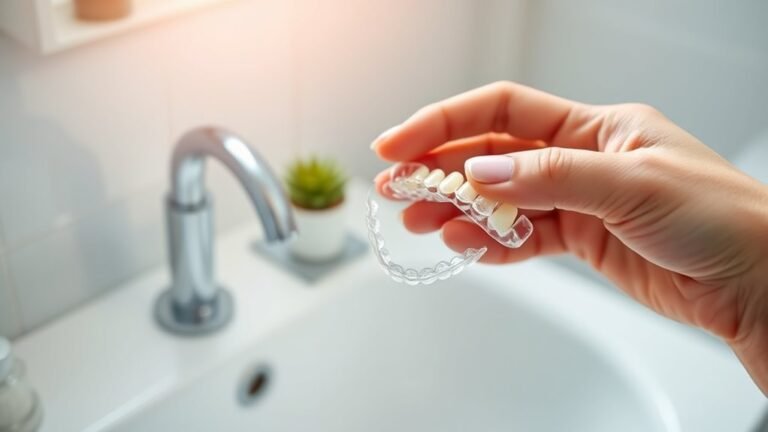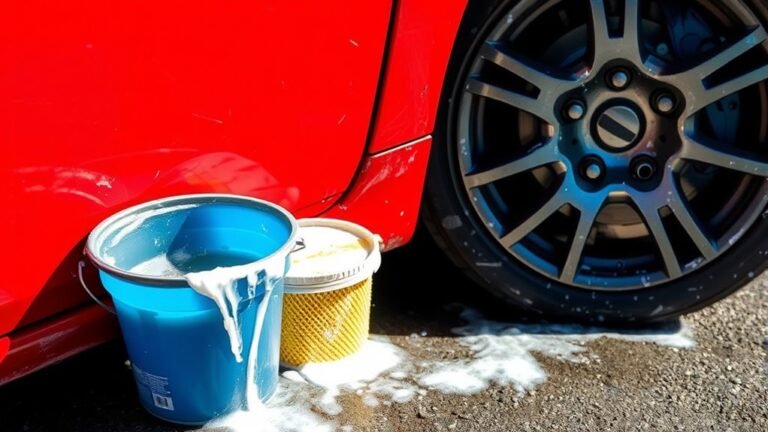Cleaning With High-Pressure Water Jets: What to Know
When cleaning with high-pressure water jets, you’ll want to match the pressure and nozzle type to your surface to avoid damage while maximizing grime removal. Always wear protective gear and check your equipment for leaks to stay safe. Keep in mind water use and opt for eco-friendly detergents to reduce environmental impact. Regular maintenance helps keep your cleaner efficient and reliable. Understanding these basics sets you up for success and opens the door to mastering effective and safe cleaning techniques.
Understanding High-Pressure Water Jet Technology

Although high-pressure water jet technology might seem complex at first, you’ll quickly see it’s a straightforward and effective cleaning method. This technology uses a powerful stream of water propelled at high pressure to remove dirt, grime, and even stubborn materials. The jet technology applications are vast, from industrial cleaning to surface preparation, giving you the freedom to tackle tough jobs without harsh chemicals. One of the high pressure benefits is its ability to clean deeply while conserving water and minimizing damage to surfaces. You’ll appreciate how this method combines efficiency with eco-friendliness, making it perfect for those who want powerful results without compromising their values. Once you understand how it works, you’ll feel empowered to use this tool for a variety of cleaning challenges.
Selecting the Right Pressure and Nozzle for Your Task
Choosing the right pressure level and nozzle type is essential for effective cleaning without damaging surfaces. You’ll want to understand how different pressure settings work and which nozzles fit specific tasks. Matching the nozzle to the surface guarantees you get the best results while protecting your materials.
Pressure Levels Explained
When you’re selecting the right pressure and nozzle for your cleaning task, understanding pressure levels is essential to avoid damage and guarantee efficiency. Pressure levels, measured in PSI (pounds per square inch), directly affect cleaning efficiency. Too low, and you won’t remove tough grime; too high, and you risk harming surfaces or wasting water. You want just enough force to blast away dirt without stripping paint or denting materials. For delicate surfaces, lower pressure levels work best, while hardier areas like concrete can handle higher settings. Adjusting pressure lets you control power and protect what you’re cleaning. Mastering pressure levels gives you freedom to tackle any job smartly, saving time and effort while keeping your property intact. It’s all about balancing strength with care to get the best results.
Nozzle Types Overview
There are several nozzle types you can use with your high-pressure water jet, each designed for specific cleaning tasks and pressure levels. Choosing the right nozzle means understanding nozzle materials, like stainless steel for durability or tungsten carbide for tough jobs. Each material affects how long your nozzle lasts and performs. Nozzle applications vary widely—from wide fan nozzles that cover large surfaces quickly, to pinpoint nozzles that deliver concentrated force for stubborn grime. You’ll find rotating nozzles that combine cleaning power with speed, perfect when you want efficiency without sacrificing quality. Knowing these differences lets you pick a nozzle that fits your freedom to tackle any job effectively, without damaging surfaces or wasting pressure. Selecting wisely means your cleaning tools work smarter, not harder.
Matching Nozzle to Surface
Matching the right nozzle and pressure to your surface is essential for effective cleaning without causing damage. You want to guarantee nozzle compatibility with the material you’re tackling—whether it’s delicate wood, sturdy concrete, or painted surfaces. Surfaces with high sensitivity require lower pressure and wider spray nozzles to avoid etching or stripping. Conversely, tough grime on harder surfaces calls for concentrated jets with smaller nozzles and higher pressure. Always start with the gentlest nozzle and increase pressure gradually, testing on a small area first. This way, you maintain control and protect your surfaces while enjoying the freedom to clean efficiently. By choosing the right combination, you’ll save time, avoid costly repairs, and get the job done right the first time.
Safety Precautions When Using High-Pressure Water Jets
When using high-pressure water jets, you need to wear protective gear like goggles, gloves, and sturdy boots to keep yourself safe. It’s also important to follow safe operating techniques to prevent accidents and injuries. Let’s go over the key precautions you should take before starting your cleaning task.
Protective Gear Essentials
Wearing the right protective gear is essential to staying safe while using high-pressure water jets. You want to keep your freedom to work efficiently without risking injury. Start with protective clothing that covers your arms and legs completely to shield your skin from powerful water blasts and flying debris. Durable, water-resistant materials are best—they help you move freely while staying protected. Never skip safety goggles; these are vital to protect your eyes from unexpected splashes and particles. A sturdy pair that fits well will keep your vision clear and your eyes safe. Gloves and non-slip boots are smart additions, giving you better grip and stability. By gearing up properly, you maintain control and safety, letting you handle high-pressure cleaning with confidence and freedom.
Safe Operating Techniques
Although high-pressure water jets are powerful tools, you should always follow strict safety precautions to prevent accidents. Start by familiarizing yourself with safe practices: maintain a firm grip, never point the jet at yourself or others, and keep a clear workspace. Use the correct nozzle and pressure for your task to avoid damage or injury. Always check your equipment for leaks or wear before use. Knowing emergency procedures is essential—have a plan for shutting down the system quickly and keep a first aid kit nearby. Never work alone; having someone nearby guarantees help is available if something goes wrong. By sticking to these safe operating techniques, you protect yourself and enjoy the freedom of effective, worry-free cleaning.
Suitable Surfaces and Materials for Water Jet Cleaning

Since high-pressure water jets can be quite powerful, you need to be careful about which surfaces and materials you clean with them. Concrete surfaces and metal surfaces generally handle the pressure well, making them ideal candidates. However, delicate materials like wood or painted surfaces may get damaged easily.
Here’s a quick guide to help you choose:
| Surface Type | Suitability for Water Jet Cleaning |
|---|---|
| Concrete Surfaces | Excellent – withstands high pressure |
| Metal Surfaces | Excellent – removes rust, grime effectively |
| Wood and Painted Surfaces | Poor – risk of damage or peeling paint |
Environmental Considerations and Water Usage
When using high-pressure water jets, you should consider their environmental impact and water consumption. These powerful tools can use a significant amount of water, so practicing water conservation is key. By choosing the right pressure settings and targeting only necessary areas, you can reduce waste and protect local water resources. Remember, excessive water use can strain ecosystems and contribute to pollution if runoff carries debris or chemicals. To minimize your environmental impact, consider using eco-friendly detergents and capturing runoff when possible. This way, you enjoy the freedom of efficient cleaning without compromising nature. Balancing effective cleaning with responsible water use lets you maintain your space and respect the environment simultaneously—ensuring your cleaning habits support sustainability, not harm it.
Maintenance Tips for Your High-Pressure Cleaner

Keeping your high-pressure cleaner in good shape not only assures effective cleaning but also helps conserve water and protect the environment. Regular high pressure maintenance guarantees your equipment runs smoothly and lasts longer. Here are essential cleaning tips to keep your freedom intact while enjoying powerful cleaning.
| Task | Frequency | Tip |
|---|---|---|
| Inspect Hoses | Before each use | Check for leaks or cracks |
| Clean Nozzles | Weekly | Remove debris to prevent clog |
| Change Oil | Every 50 hours | Use manufacturer-recommended oil |
| Flush System | After each use | Prevent buildup in pump |
| Store Properly | After use | Keep in dry, cool place |
Stick to these maintenance tips and your cleaner will always be ready for action, saving water and time every time you clean.
Frequently Asked Questions
Can High-Pressure Water Jets Remove Graffiti Effectively?
You might wonder if high-pressure water jets can handle graffiti removal techniques effectively. They sure can, thanks to their impressive water jet efficiency that blasts away paint without harsh chemicals. This method lets you reclaim your space freely, avoiding damage to surfaces while erasing unwanted markings. So, if you’re aiming for a powerful, eco-friendly way to clean graffiti, high-pressure water jets offer a liberating solution that respects both your environment and freedom.
How Do Water Jets Compare to Chemical Cleaners in Cost?
Isn’t it just *so* fun watching your budget vanish with chemical cleaners? If you want true cost efficiency, water jets are your best bet. They may seem pricier upfront, but you’ll enjoy long term savings thanks to less product use and minimal damage to surfaces. Plus, you’re free from harsh chemicals, giving you cleaner results and peace of mind. Choosing water jets means you’re investing in freedom—for your wallet and the environment.
Are There Portable High-Pressure Water Jet Systems Available?
Yes, you’ll find plenty of portable options when it comes to high-pressure water jet systems. These units are designed for easy transport, giving you the freedom to clean wherever you need. When choosing one, pay attention to jet specifications like pressure level and flow rate to guarantee it matches your tasks. Portable high-pressure jets let you tackle tough grime on the go, without being tied down to bulky equipment.
Can High-Pressure Jets Be Used for Food Industry Cleaning?
You can definitely use high-pressure jets in the food industry, but you’ve got to be careful. They’re great for tough cleaning tasks and help maintain strict food safety and sanitation standards. Just make certain the equipment is designed for food environments so it doesn’t contaminate surfaces. Following proper protocols gives you the freedom to guarantee your workspace stays spotless without compromising hygiene or quality. It’s all about balancing power with responsibility.
What Is the Typical Lifespan of a Water Jet Pump?
You can expect a water jet pump to last anywhere from 5 to 10 years, but that depends on how well you take care of it. Regular maintenance tips like checking seals, lubricating parts, and cleaning filters will keep pump efficiency high and extend its life. If you stay on top of these, you’ll enjoy reliable performance without feeling tied down by constant repairs or replacements.






